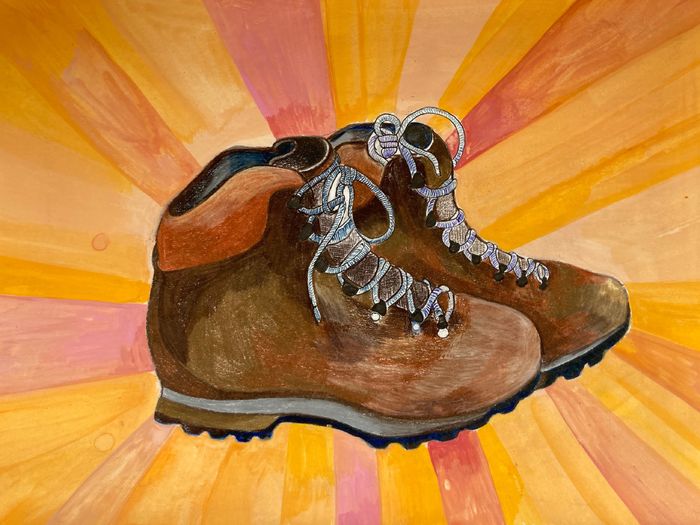A love for plants and nature: what gardening has taught me
Kuan-Chun Chen explores his newfound knowledge of the natural world through a college wildflower planting project
I used to be someone who could not appreciate plants, and my ability to name plants has never developed outside grocery stores. It was not that I actively resisted learning the nuances of different grasses or trees, nor did I detest plants or think of myself as a higher form of life. But somehow it was difficult for me to formulate concrete ideas of different leaf shapes because they appeared so irregular. I had no tangible language to describe and make sense of their shapes; I had no way to develop an affinity for them. Despite these cognitive difficulties with plants, I had not given up trying to understand them because I still believed they had some secrets to tell me.
This eventually led me to a wildflower planting project in my college that aimed to convert lawns into more eco-friendly meadows and in three half-days, I planted around 250 wildflower seedlings. Starting as someone who did not even know how to use trowels properly, I have observed the characteristics of soils with different moisture levels and developed my own techniques to deal with them effectively.
“I still believed they had some secrets to tell me”
I don’t recall having had any similar gardening experience except for those old school days when I planted some beans in two bonsais. But planting plants in bonsais is not even comparable to gardening outdoors. Bonsais give plants mobility to be moved around by humans easily, but do not provide plants with the chance to connect to the land and interact with earthworms which come by to be tickled by plant roots or other creatures living underground which come to visit for whatever reason. I wonder to what extent bonsais confine plants’ full potential like the animals in the zoos.
The idea of cute earthworms tickling the plants turned out to be merely a fantasy, full of personified animals. Hard soil was dry, so it was almost always empty of animals underneath it. Under soft soil, however, the picture soon became much more complicated and lively. At first, I even forgot that earthworms existed. Each dig was potentially a scream because I never knew what would come next. Sometimes multiple earthworms came out of the darkness all at once and I was no longer able to track which ones were intact and which ones were accidentally cut into two halves. From a biological perspective, though, seeing these earthworms is certainly a good sign because it means the soil is rich and nutritious.
“Each dig was potentially a scream because I never knew what would come next”
Contrary to common beliefs, not all earthworm species can multiply after they’re cut into two; only the tail end regenerates. When they squirmed after being cut, I did not know how to interpret their body movement because it might have been some kind of pain. Their brains might interpret that stimulation differently than humans’, but a certain reaction to environmental change was more than evident. Whatever their body language meant, I was sure that these interpretations of pain were my own emotional and sensual projections and that I was the uninvited visitor (rather: intruder) that disturbed these inhabitants’ good nap.
Gardening can become repetitive, but if one pays more attention to the underground world and to different soils, each movement can contain so many slight differences. Dig a hole, put the seedling in, cover its root with soil, pat the soil, and move on. It’s that easy, but it seems that it is in these simple steps that I was equipped with a lens that allows me to become more observant. For me, the therapeutic and calming quality of gardening comes precisely from the fact that I can temporarily forget I am a human and simply focus on the interaction with the land, animals, and plants. I was also constantly reminded that each action I took was active involvement in nature and has an impact on the habitats of animals and ourselves.
After a few weeks, I went back to the field to visit the flowers I planted. No longer feeble and small, their bigger leaves showed incredible resilience and strength. They tried so hard to persist in the wind, in the rain, and in the storm. This reminded me of the ancient Greek poet Pindar’s line: ‘But human excellence grows like a vine tree, fed by the green dew, raised up, among wise men and just, to the liquid sky.’
The philosopher Martha Nussbaum states, ‘the excellence of the good person, he writes, is like a young plant: something growing in the world, slender, fragile, in constant need of food from without.’ To be sure, plants do not have feelings like animals and they experience the world in a way I will never be able to fathom, but their firm and indomitable tenacity moved me deeply. They seemed to have soothed my sometimes doubtful mind and provided me with a haven to dwell in or to escape to, allowing me to forget my existence as a human being and to imagine myself as a young plant in stormy nights, so fragile but so unyielding at the same time.
I used to be someone who could not identify plants, and I still am. But I have learned to slow down and appreciate them more closely and slowly. I believe that one day, if I take enough time to get to know the plants better, I will also be able to identify them without a plant index.
As I was still standing in the field, the flowers looked back at me and smiled. But then I realised, no, they were not smiling; I was.











